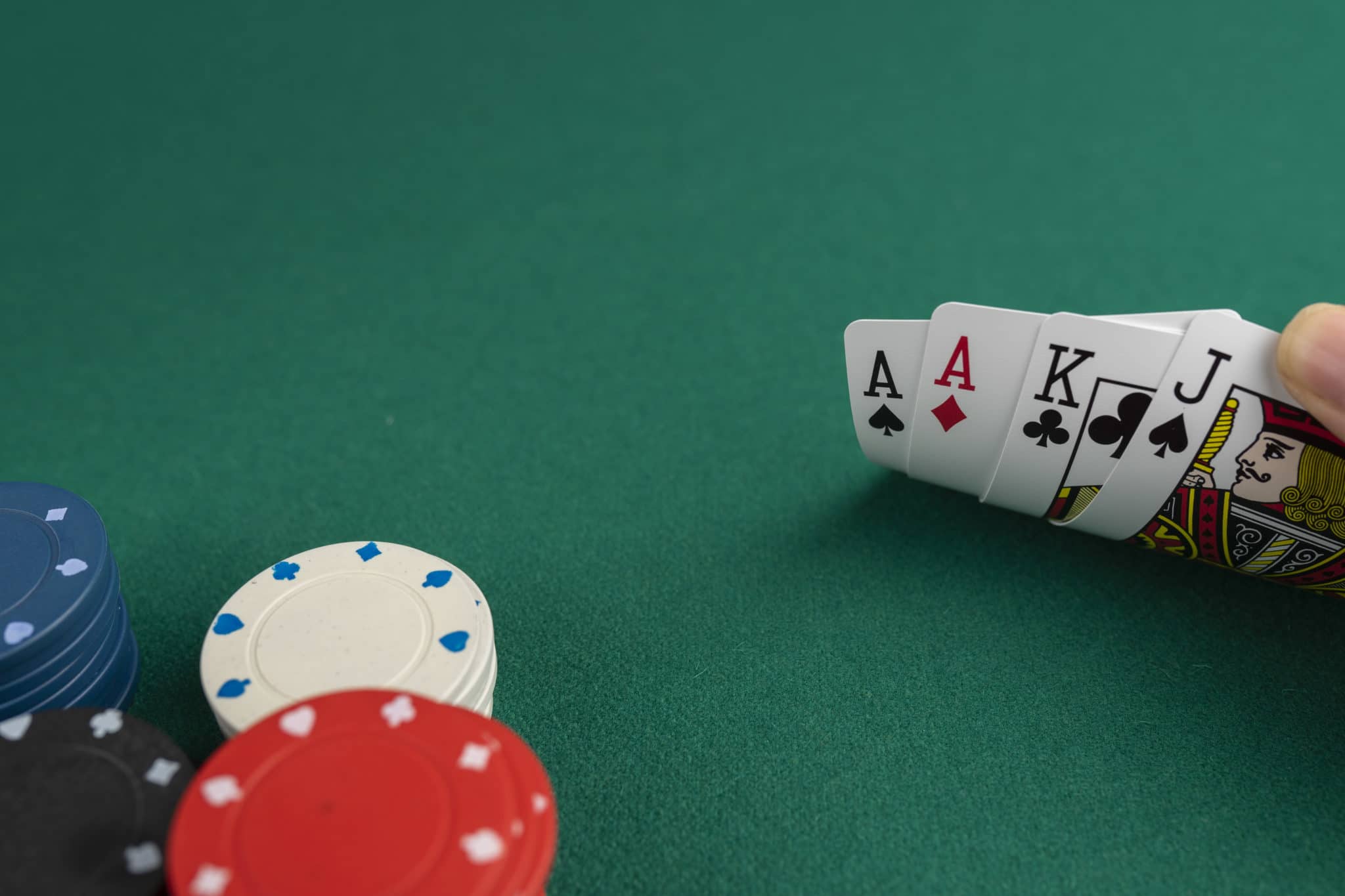Plo 8 Or Better Strategy
PLO8 Poker Strategy The Principals Behind Beating PLO8 Games Split pot poker games add a whole new element to your strategy. With the 4 hole-cards used in Omaha games, there are plenty of opportunities to make better decision making get you the profits over time. Bart gives you his best tips for how do to well in Omaha 8 tournaments.If you want to call in with a hand or question for Bart use the number 323 348 1281.
Are you new at poker and want to learn how to play Pot Limit Omaha (PLO)? Or is Texas Holdem your typical game and you want to add to your repretoire? If you are among the latter folks, pay special attention to the tips below because Omaha players are on the lookout for common Texas mistakes.
Below we introduce PLO strategies for starting hand selection and assessment, bankroll management, equity, backdoor outs and kill cards, and hand reading.
- The Gunpowder Plot of 1605, in earlier centuries often called the Gunpowder Treason Plot or the Jesuit Treason, was a failed assassination attempt against King James I by a group of provincial English Catholics led by Robert Catesby who sought to restore the Catholic monarchy from the Church of England after decades of persecution of Catholics.
- 2017 World Series of Poker EuropeLive final table action from the King's Casino in Rozvadov, Czech Republic.Event #7: €1,650 Pot-Limit Omaha Hi-Lo 8 or Bette.
Basic PLO Strategy & Tips
Many players give PLO a try as a refreshing change from Texas Holdem. With 4 hole cards and betting limits fixed by the size of the pot, there are new strategy considerations to keep your mind fresh. This article covers some of the key strategy tips you’ll need to keep in mind when your first move over. Remember that experienced PLO players are on the lookout for people making ‘Holdem Player Mistakes’ and are ready to take advantage.
There are 3 main areas covered in this article. First the setup of starting hands and the importance of betting with combinations of cards that work together. Next you’ll find tips covering the relative strengths of hands at showdown. After that some advice on how to avoid giving away the content of your Omaha hand too early.
Pot Limit Omaha Strategy Tips – Starting Hand Selection
In PLO poker, a showdown has very specific rules. You can use 2 and only 2 cards from you own 4 hole-cards, and 3 and only 3 cards from the 5 community cards. Reading the board comes easily with practice, though the effect on starting hand selection is more subtle.
The best Omaha hands are those which have the largest possible number of 2-card combinations which work together – in addition to some high card strength. The best hands are A-A-J-10 with 2 ace high suited pairs, and A-A-K-K also double-suited. Both of these can make top set, straights and nut flushes. Other super-strong hands in PLO are called ‘Rundowns’ and include hands like 9-10-J-Q double suited. Here you have 6 combinations of hands working for you and you can flop draws with up to 21 outs – making you a favorite over a set.
Even one unconnected card halves the number of combinations you have working for you. The really dangerous Omaha starting hands contain small to medium pairs. Sure, you can flop a set now and again, but when the betting gets extra heavy in this game – middle or bottom set is a trap hand. If you are not already beaten by a higher set then you could be facing one or more massive draws which are favorite to beat you.
Pot Limit Omaha Strategy Tips- Relative Hand Strength At Showdown
Hands shown down in PLO are much stronger than you will be used to in Texas Holdem. If you think that each player starts with up to 6 potential 2-card combinations, then it makes sense that hands shown down will be close to the nuts. Just imagine betting into 3 players in Texas Holdem holding 18 hands – one of them must have hit the flop.
If you can get your aces all-in pre-flop then you should do that, however unimproved over-pairs are very unlikely to win the pot when there has been significant action.
Coordinated flops mean you need to make a decision on whether to continue immediately. The betting gets exponentially bigger on each round with pot-limit rules and ‘just calling to see what happens’ can lead you to hit a low straight, non-nut flush or two pair – which will cost you money more often than they make you any.
A good rule of thumb for new players is to only draw to nut hands. The highest straights, nut flushes and the best full-house should all be included. Once you get used to how different opponents are betting in different situations you can add in some non-nut draws like the underfull or King-high flushes.
Pot-Limit Omaha Strategy Tips – Don’t Give Away That Hand Too Early

A common mistake new Omaha players make is to limp or call pre-flop with a wide range of speculative hands – and then suddenly raise with a pair of aces or kings. This is so well known among regular players that many specifically watch for these raises. What you will find is that you instantly end up with 5 callers, and are quickly checked to on the flop.
If you did not improve on the flop you need to be wary, your opponents will know what you have (well, half of your hand at least) and will be ready to build a big pot if they have you beaten. Once you gain some PLO experience of your own you can join in the profitable pastime of watching for aces-only raisers.
Even players who raise a wider range of coordinated hands can fall into this trap sometimes. This happens when only aces are used to re-raise. If you are going to give away your hand in this way you need to make sure that you have no more than one pot-sized bet left after the flop – otherwise it is easily exploitable by observant opponents.
Omaha is a fantastic game and has developed a loyal following online. These tips should keep you from losing too many easy chips while you learn to beat the game.
Advanced PLO Strategy
Once you have learned the basics of starting hand selection, drawing to the nuts and pot-limit betting – you are ready to add some advanced strategies to your PLO armory. This article covers a range of tactics that will help you increase your win-rate in lower buy-in Omaha hi games online.
First you’ll find out how to spot situations where a combination of your current equity and ‘backdoor outs’ make it profitable to call when you are not favorite to win the hand. Next some notes on reading your opponent’s hands. After this I have covered how to distinguish hands which do better heads up from hands which perform well multi-way. Finally some notes on good bankroll management, which is a key skill in the high-variance game of pot-limit Omaha.
Equity, Backdoor Outs and Kill Cards
In Pot-Limit Omaha there are many situations where the pot has gotten so large that you have an easy call with a hand which is likely behind. This is not just for the mega-draws like wrap + flush draw hands, it can be for a simple flush with the pot offering you compelling odds.
What many new players miss is that there is often extra equity from backdoor draws. For example with a flush draw + top-pair hand, you will have chances of trips or even a runner-runner full-house, you may also have straight possibilities. These extras can often add the few percentage points to your equity, which make a fold into a call.
Conversely, there are often cards in the deck which are not clean outs. For example in a classic flush draw against set all-in on the flop, the set has outs to make a full house (7 on the turn and 10 on the river) which effectively kill your flush. Being outdrawn by a flush when you hold the nut straight has the additional risk of higher straight cards appearing as well as the board pairing.
You’ll need to spend some time with an Omaha poker calculator to get used to these kind of match-ups.

Hand Reading in PLO
Plo 8 Or Better Strategy List
In my article on Basic PLO Strategy Tips, I outlined how people who raise (or 3-bet) only with hands containing aces will find themselves in trouble in PLO games. There are several more ways you can learn to read the hands of your opponents in Omaha.
Key here is to start with the shape and strength of your opponents hands. You can often find bet sizing tells will give you a clue starting before the flop. For example, some players will only ever re-raise premium hands and will be more likely to raise pair or high card hands and instead call with their rundown hands.
After the flop some players will bet out every time they have a draw, while others will check and call with non-nut (though still strong) draws. With careful observation you can easily pick up patterns. If you are not used to this I recommend you start by focusing on how different opponent play their Aces hands – followed by double suited run-downs. Once you figure whether someone is drawing or ‘protecting’ a made hand from the bet sizing, your decision making process becomes significantly easier.

Multi-Way and Heads-Up Hands
Plo Poker Strategy
Some Omaha hands perform better in multi-way pots, while others are at their strongest when heads-up. Examples of multi-way hands include the higher rundown hands, preferably double suited. If you hold a high pair with little in the way of coordinated backup then you will ideally find yourself heads-up and with the initiative in the betting. If you miss the flop and face resistance, then high pair hands should usually be ditched.
Simply deciding whether your hand would prefer to be heads-up or multi-way can help you choose a good pre-flop betting strategy. Make sure that you mix things up sometimes though – or observant opponents will know what type of hand you are holding from your betting style.
PLO Bankroll Management
PLO is a high-variance game. You can play great and find yourself missing big draws, having your big sets cracked and find your bankroll going down fast. Of course, this will be balanced by times when you run great too!
In Texas Holdem, the agreed safe bankroll level is 20x your buy-in, so you only have 5% of your bankroll in any one game. In PLO I recommend that you play a little more conservatively with your bankroll, instead opting for 3% on any single table or 30 buy-ins minimum. This will mean you can ride the variance which is natural in this game without having to worry about your entire bankroll disappearing.
In this lesson we’re going to take a look at three groups of Omaha/8 starting hands and assess what represent real powerhouse starting hands. We’ll also examine some good Omaha/8 starting hands along with hands that are playable but where some degree of caution should be exercised. Unfortunately, one cannot expect to be dealt a powerhouse hand on every deal.
Powerhouse Omaha/8 Starting Hands
This is my favourite starting hand in Omaha/8 since it gives top pair, two nut flush draws and a great draw to the nut low including counterfeit protection. Counterfeit protection means that if an ace, deuce or trey hits the board you still have the two best low cards to put with it. As an example, if the final board was K-2-5-Q-4, your deuce would have been counterfeited but you would still have the nut low (using one of your aces and the trey) as well as a straight. If three of the cards were either clubs or spades, you would have the nut flush for high with a wheel (five-high straight) for low. This would be a very good holding hoping to scoop the entire pot. If another player held the nut low as well but your high hand was the winner, you would win three quarters of the pot made up of the high half and half of the low half.
While this Omaha/8 hand offers no low possibility, since you must use two cards from your hand, it does offer two nut flushes, straight possibilities with two different high pairs which could make sets and then, if the board pairs, very good full houses. This is the type of hand where you hope that no one qualifies for low and you can scoop the pot with just a winning high hand. However, there’s a danger in flopping a set with your pair of aces, or with any pair that’s eight or lower. The danger is that you’ve already put one low card on the board, and you may be vying for only half the pot instead of all of it.
This is an excellent Omaha/8 starting hand because you have four low cards offering double counterfeit protection coupled with straight draws and the nut flush draw. Having the three and four suited does not add value as a four high flush with three of that suit on the board is really a liability and not an asset.

Good Omaha/8 Starting Hands
This hand provides no possibility of a low hand so you would definitely like to see all high cards on the flop including a ten. There are also two flush draws, one to the nut and the other to the second nut. This is the kind of hand that, if no or only one low card flops you need to raise and re-raise to make it very expensive for low hands to chase in order to qualify. The object here is to scoop a one way pot for high. In fact, if you’re in late position and a number of players have already entered the pot, you should raise. Most of your opponents will play low hands, and a large number of opponents points to a deck that is presumptively rich in high cards, which favor your hand. So go ahead and get more money in the pot. If the flop contains big cards, you are likely to scoop. If it contains all low cards, you can easily release your hand.
This Omaha/8 hand offers the opportunity of a nut flush, nut low and straight draws. With a pair you can also flop a set or even quads. Counterfeit protection is part of its upside as well. This is a good hand that is not quite a powerhouse.
While you usually want an ace in your hand this Omaha/8 hand represents very good counterfeit protection. Obviously, you would like to see an ace and two small cards hit the flop which would give you a nut low. The straight draws enhance the value of this starting hand. You’ll notice this isn’t double suited since getting a four or five high flush is really of no value. This hand’s value is in straights and lows with counterfeit protection.
Playable with Some Caution, Starting Hands
5 Card Plo Strategy
This is an example of a playable Omaha/8 hand where caution should be exercised. While there are two flush draws and a myriad of straight draws they are all somewhat problematic. In an action game like Omaha/8, where there is frequent raising, it can be very expensive to wind up with a second best hand for high or low. With a hand like this, if you make a low hand, it is unlikely to be the best low, and even a straight may not be the nut straight. Moreover, any flush you make may not be the best flush either.
This hand is a far cry from the two pair hand of A-A-K-K which was highlighted in the powerhouse section. While it looks good, including the straight possibilities and jack-high flush draw, caution is recommended anytime you’re not drawing to the nuts. It doesn’t mean you shouldn’t play them, but it does mean you should be a bit cautious when you do.
Plo 8 Or Better Rules
Here is another hand that on the surface looks pretty good with draws to both a king- and queen-high flush, straight draws, and two good low cards. While the winning hand can certainly be made with this start, the hand can also lead to trouble with a capital “T”. This hand exemplifies just how important an ace in your starting hand really is. You cannot make a nut flush or a nut straight or a nut low unless an ace comes on the board.
I’ve offered up three examples in each of the three categories to highlight what I believe represent the powerhouses, just good, as cautiously playable starting hands. Obviously this is not meant to be a complete listing but to give you a sense of the upsides and downsides of Omaha/8 starting hands. As with all forms of poker, your starting hand values need to be viewed in concert with your position, the texture of the game, your opponents’ playing styles, as well as your own style and the degree of risk you enjoy.
Advanced Plo Strategy
Related Lessons
Plo 8 Or Better Strategy
By Tom 'TIME' Leonard
Tom has been writing about poker since 1994 and has played across the USA for over 40 years, playing every game in almost every card room in Atlantic City, California and Las Vegas.